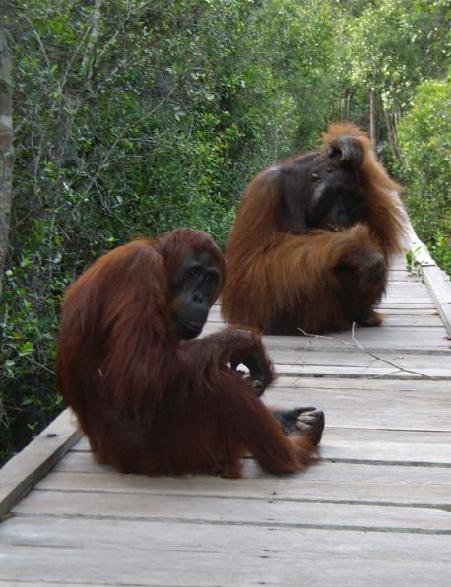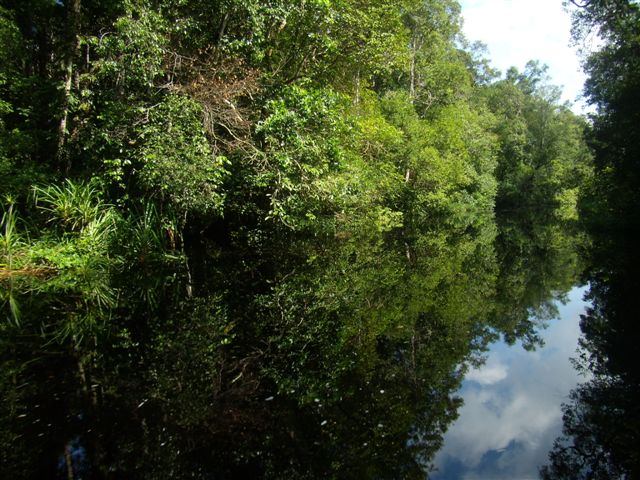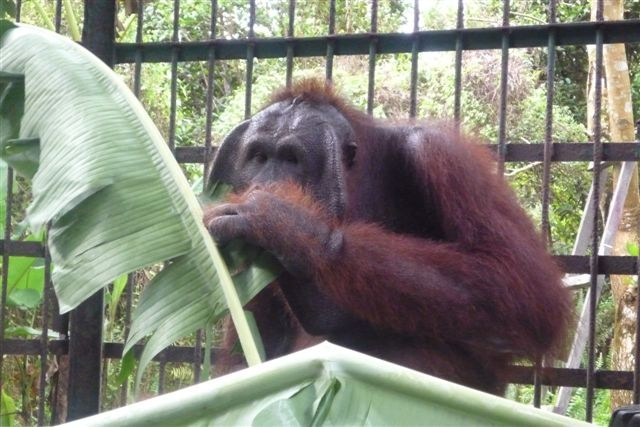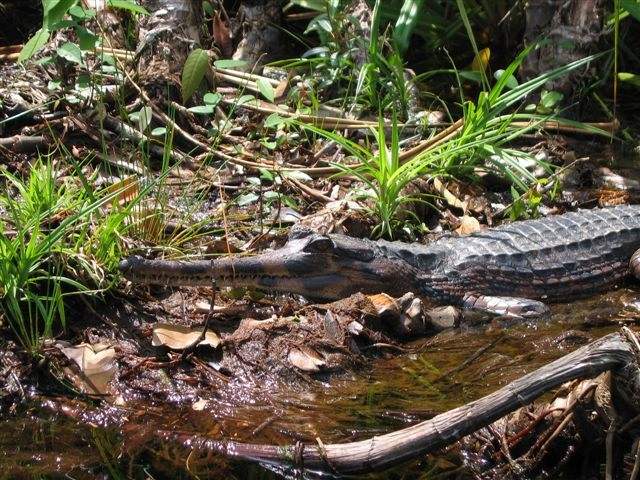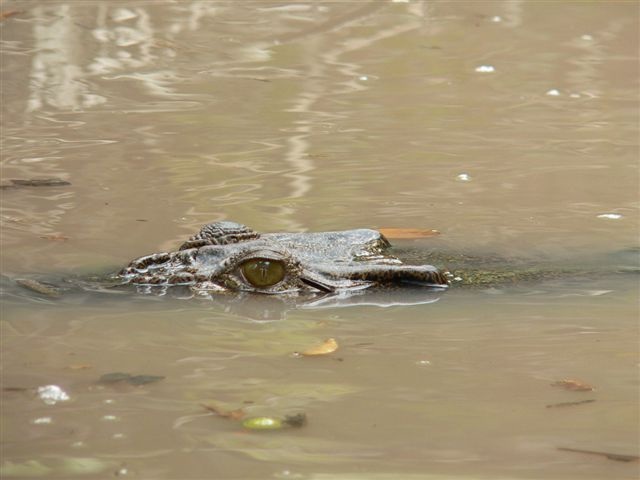It has just started to rain, which means it is bucketing down. The noise is deafening and Ully, our book keeper, has just pulled a face because she left her laundry outside when she came to work. Welcome to the rainy season in Borneo.
My name is Stephen Brend and I am the Orangutan Foundation’s Senior Conservationist here in Central Kalimantan, Indonesia. I have never been much of a story writer so I am going to give away the punch-line straight off. We are here to save orangutans and to do that we need to save their habitat. In our blogs, you’ll read stories of individual orangutans and whole populations, but wherever the orangutans are and wherever we work the underlying context is always the same: to protect the rainforest.

Tanjung Puting National Park
Pressure on Indonesia’s forests comes in many forms: the rampant spread of oil-palm plantations, commercial logging, illegal logging, small scale agriculture and fire. Our work aims to tackle the threats directly, as when we evict illegal loggers from a National Park, and indirectly through education and rural livelihood programmes. We work both in protected areas and outside of them – perhaps as many as 60% of Indonesia’s remaining Bornean orangutans are in logging concessions. We have had successes and set backs. Illegal logging in Tanjung Puting National Park has almost been totally eradicated, but last year we had to fight widespread forest fires, the worst the country had seen in a decade. Increased awareness of global climate change has focussed the world’s attention on tropical forests, but has also increased demand for bio fuels, which in this part of the world translates as palm oil. Having managed to stop illegal logging in Tanjung Puting we now face plans to reduce the size of the Park to allow more plantations to be established.

Oil palm plantations within the Park’s borders
Also, behind the need to save the forests, is the need to save the orphaned orangutans who ultimately all come from the forests which have been lost. The number of orangutans in rehabilitation centres across Indonesia is a symptom of the rate of deforestation.

From total dependence on a human carer to having fun in the trees, where they belong!
I hope through our blogs you will come to understand how we work, how we pick and implement our projects and, perhaps most importantly, come to know our Indonesian team. My job here involves spending a lot of time in the field, often up to my waist in swamp water, but I consider those the good days! The truth is it is my colleagues who do the real work. It is their incredible effort and commitment which makes the long term survival of the orangutan a real possibility and should give us all reason for hope rather than despair. It certainly does me.
So here’s a brief outline of the Orangutan Foundation’s main programmes and areas of work:
Tanjung Puting National Park (TPNP) covers 416,000 hectares and is one of the world's largest areas of peat swamp and heath forest. It has over 4,000 wild orangutans – one of the largest remaining populations. The Park is critical for the conservation of orangutans.

Guard post in TPNP
In Tanjung Puting, OF supports guard posts to prevent illegal activities and help emphasise that the park is being constantly monitored. Also, in the Park we manage the Camp Leakey Information Centre and Pondok Ambung Tropical Forest Research Station, which form part of our commitment to encouraging scientific research and developing ecotourism.
Lamandau Wildlife Reserve covers an area of about 76,000 hectares was created out of two former logging concessions. It was designated as a conservation area by the Indonesian Government in 1998. Lamandau is the release site for orangutans that have been rehabilitated at the Orangutan Care Centre and Quarantine (OCCQ) facility. Lamandau is protected by a network of guard posts and patrols, and around the reserve we have community outreach programmes.

Stephen guiding a rehabilitated orangutan back to the wild – release site Lamandau Wildlife Reserve
The Belantikan Conservation Programme (BCP). The Belantikan region is home to the largest orangutan population outside of a protected area. Unfortunately, the area is almost totally given over to active logging concessions. This programme is designed to help conserve the region though engagement of the local people, district Government and the loggers. BCP is a partnership between Yayorin (local NGO) and OF. The BCP team have established a strong presence in the region, and have developed good relationships with the local Government and logging companies.

Belantikan - upland forest
BCP is vital by itself, but its importance is increased by the fact that the Belantikan region is representative of upland forest areas in Kalimantan, and is categorised as both "critical orangutan habitat" and "High Conservation Value Forest (HCVF)". If we can establish a model for habitat conservation here, the implications are hugely encouraging. However, Belantikan may soon be threatened by mining following the award of licences for iron-ore 'exploration' (possibly a legal euphemism for what will turn out to be extraction).
